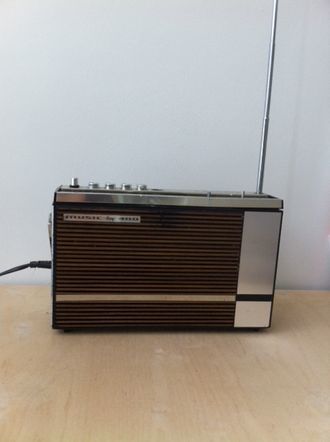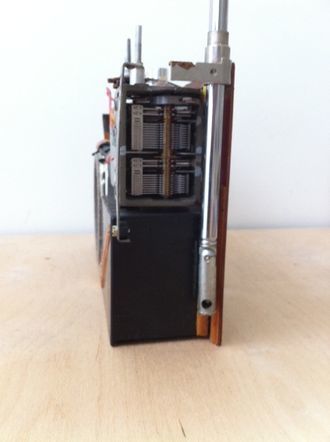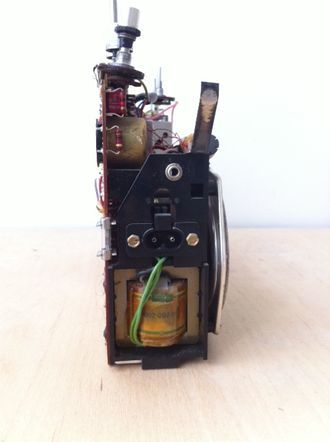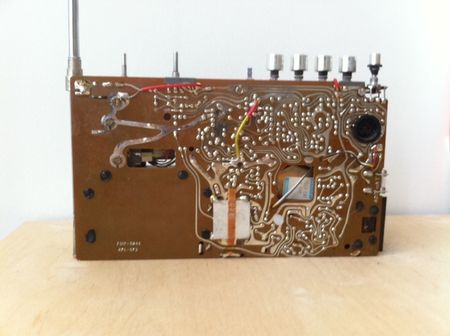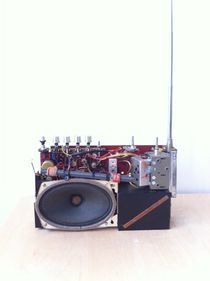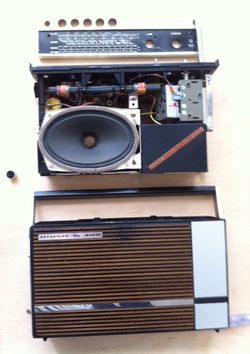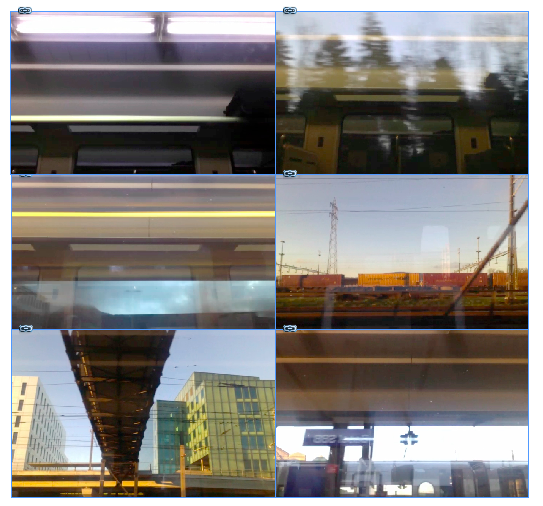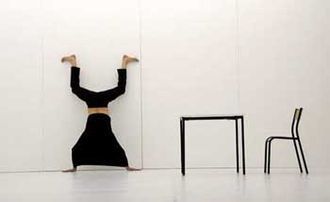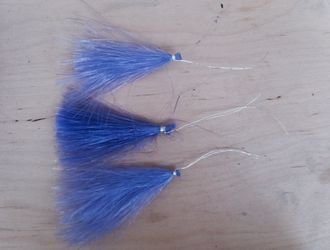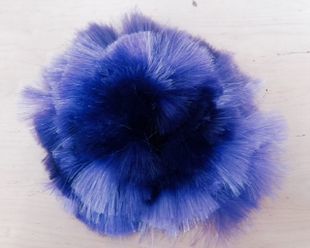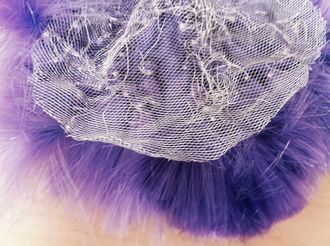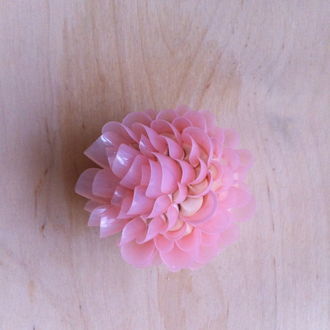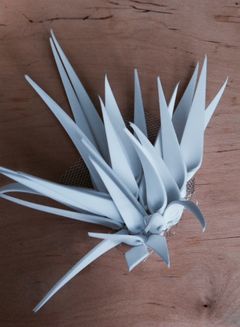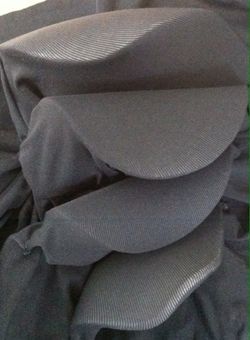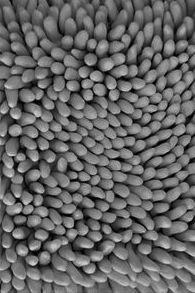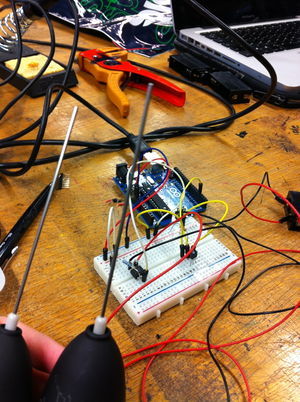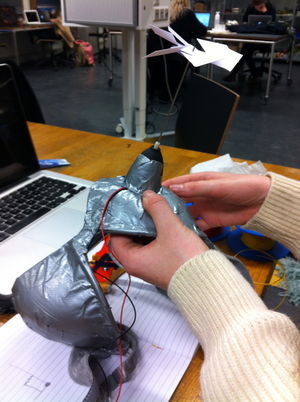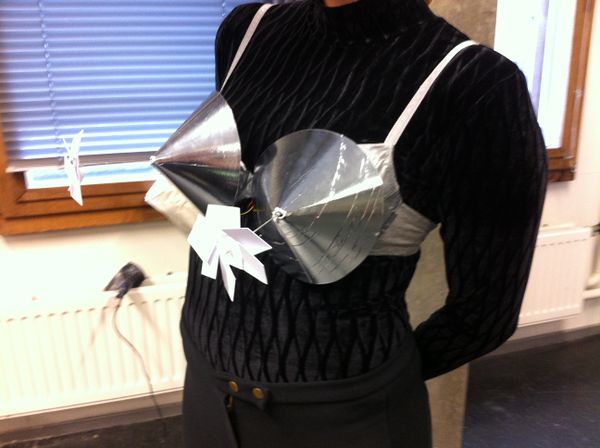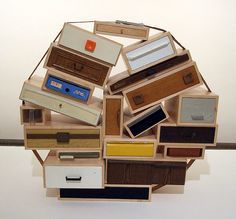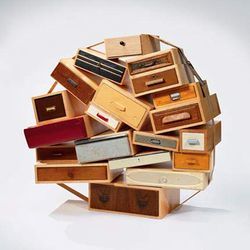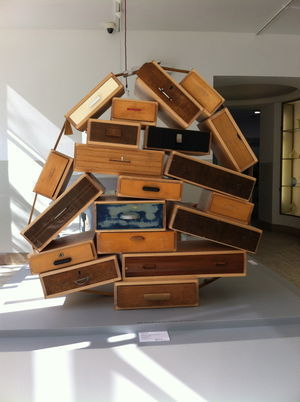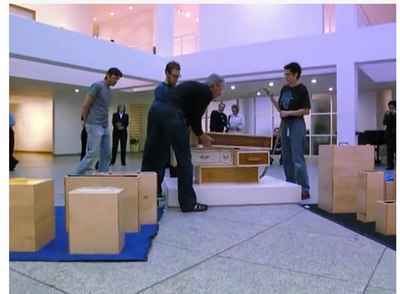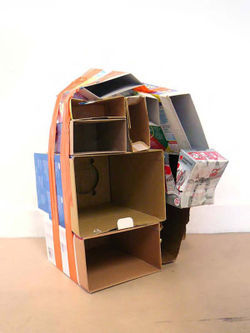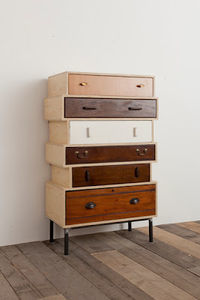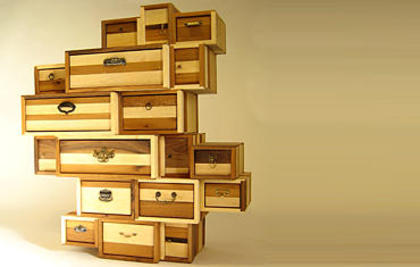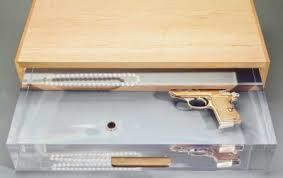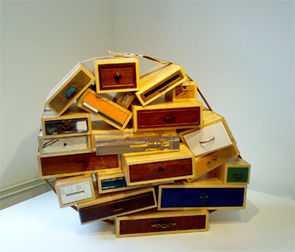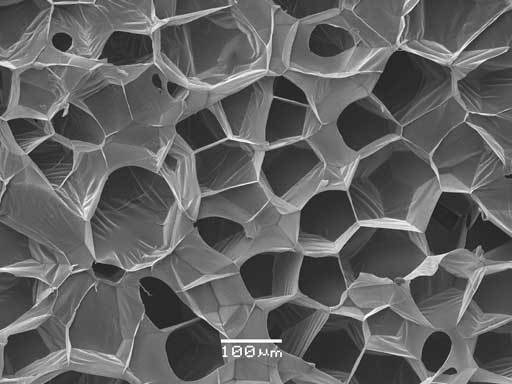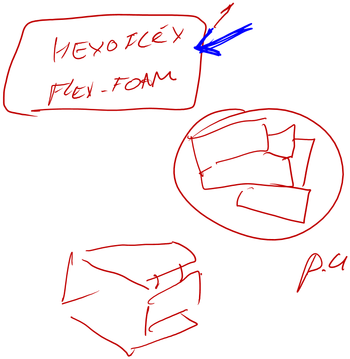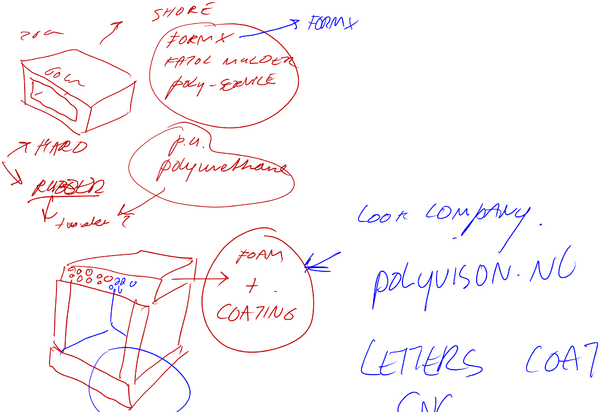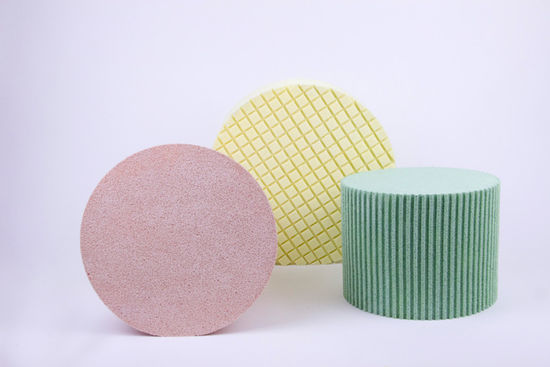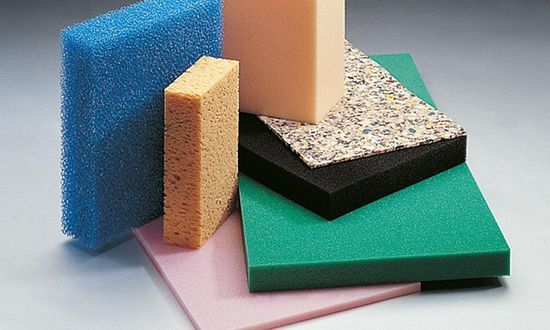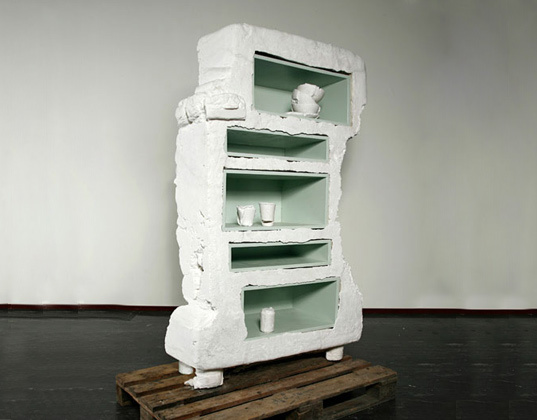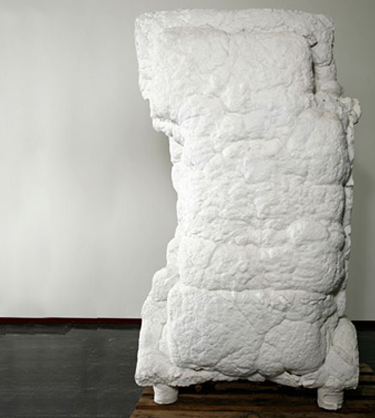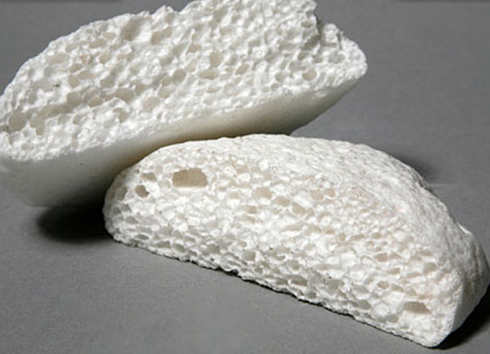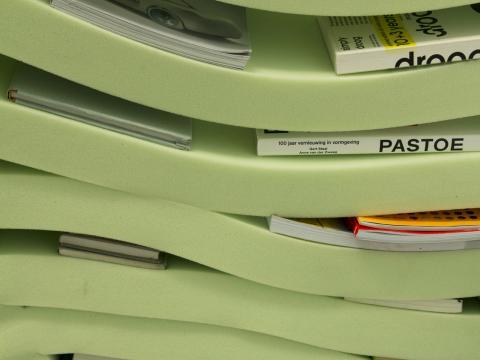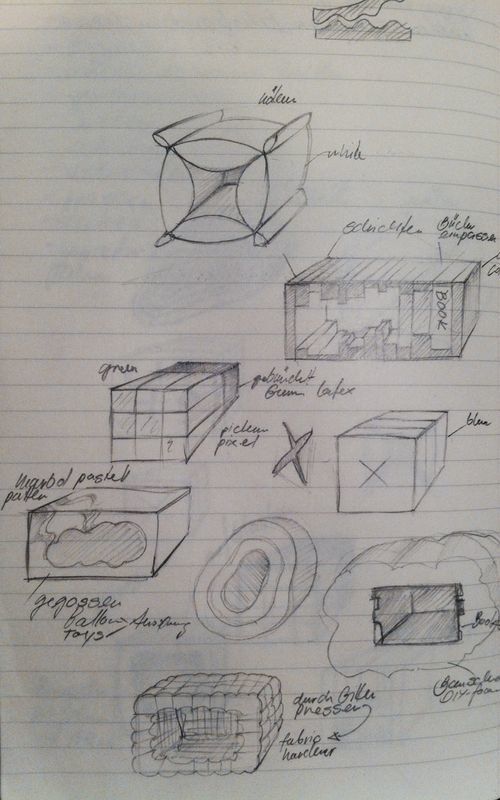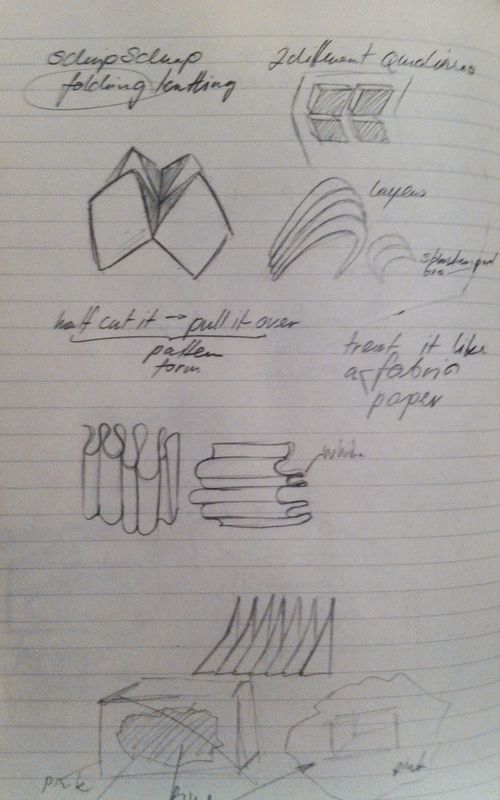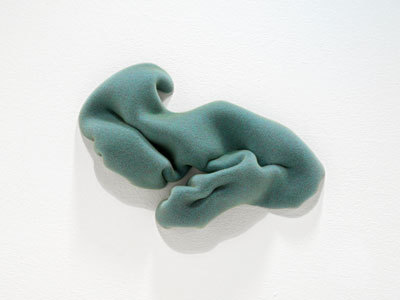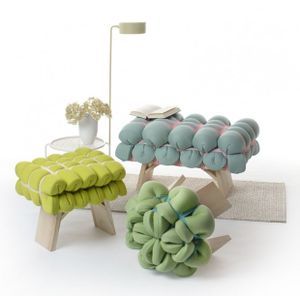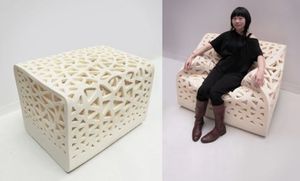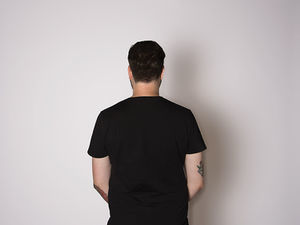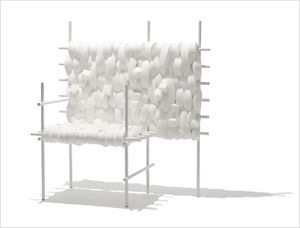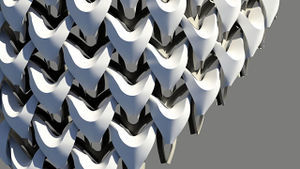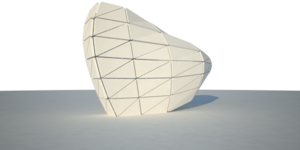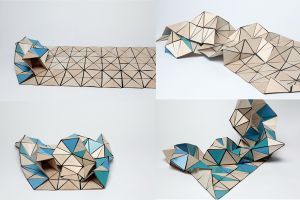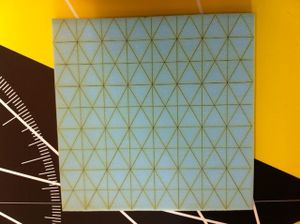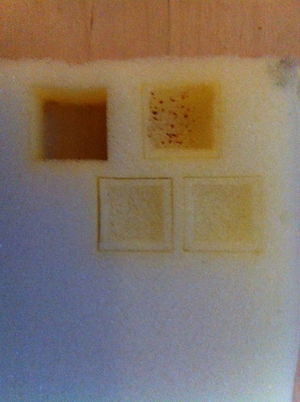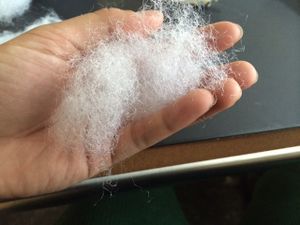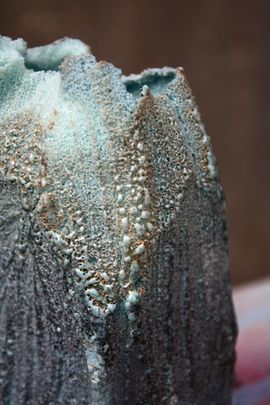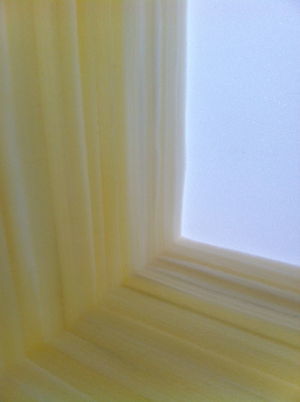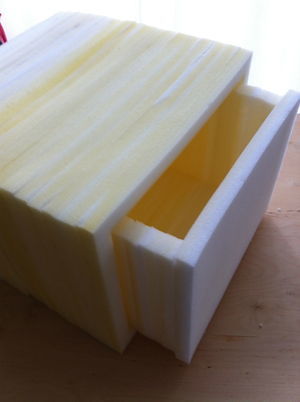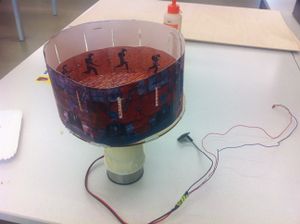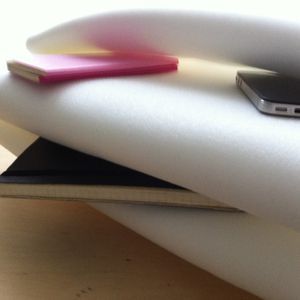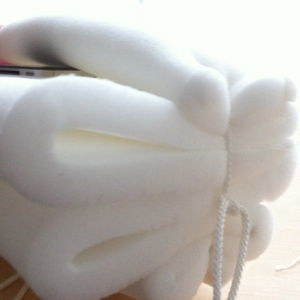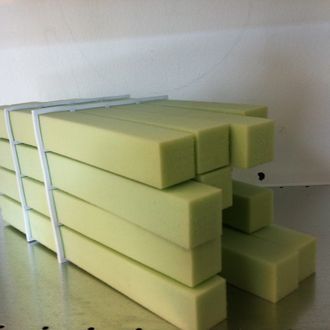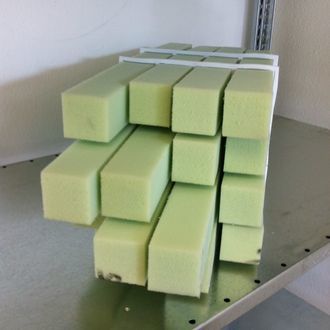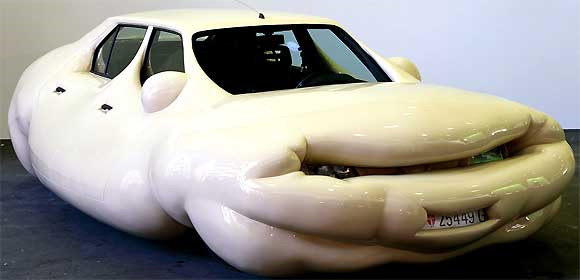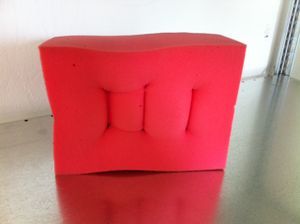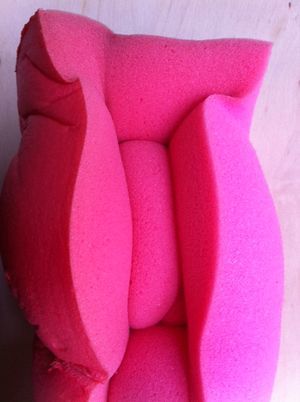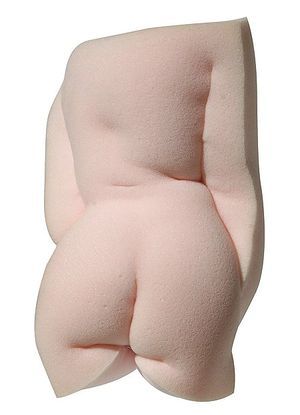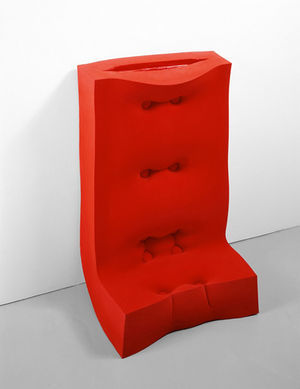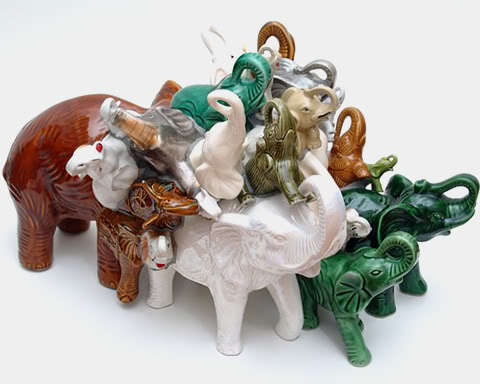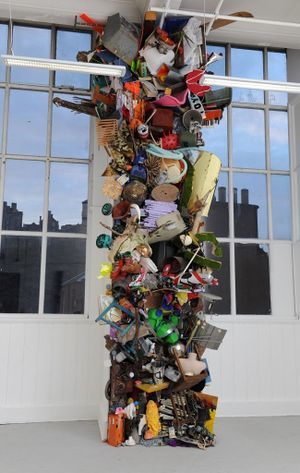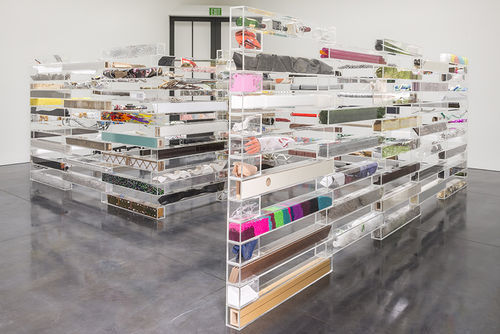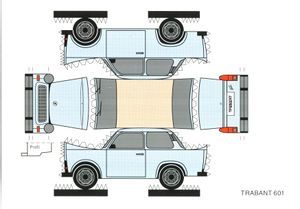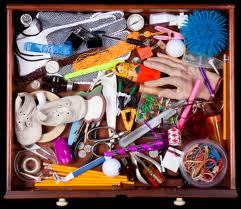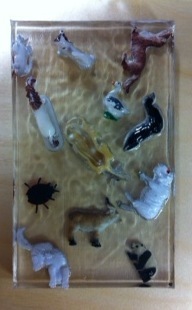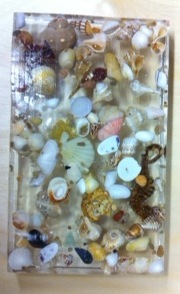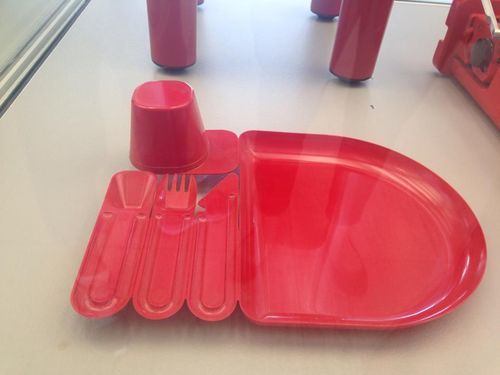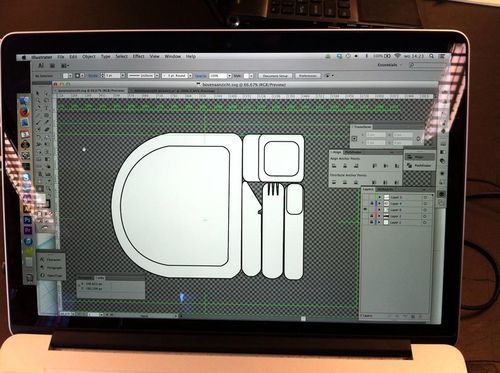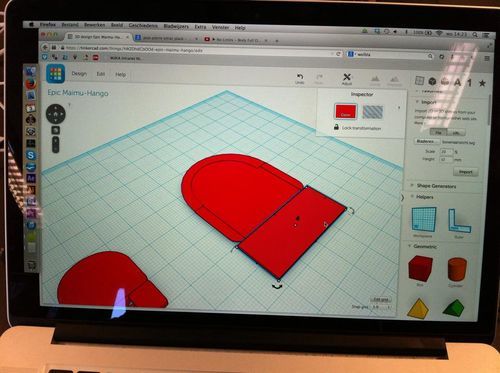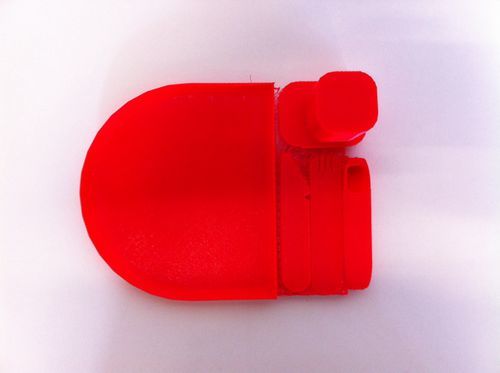Difference between revisions of "User:F.Mani"
| (109 intermediate revisions by the same user not shown) | |||
| Line 2: | Line 2: | ||
== Tools of the trade == | == Tools of the trade == | ||
| − | == Sensor == | + | |
| + | [[ File:Metalw1.JPG| 500px]][[ File:Metall2.JPG| 280px]]Mounting piece for the motor | ||
| + | |||
| + | [[ File:Radio1.JPG| 330px]][[ File:Radio4.JPG| 330px]][[ File:Radio3.JPG| 330px]][[ File:Radio2.JPG| 450px]][[ File:Radio5.JPG| 210px]] | ||
| + | Taking the radio apart | ||
| + | [[ File:Radio6.JPG| 250px]] | ||
| + | |||
| + | Fixing a new radio in the case of the old one[[ File:Radio new.JPG| 350px]] | ||
| + | |||
| + | |||
| + | === Shortfilm storyboards === | ||
| + | |||
| + | |||
| + | |||
| + | |||
| + | |||
| + | 2) it‘s raison d‘être -- your personal relationship with it and its implications for your practice | ||
| + | |||
| + | I looked at the radio as an object in a verry personal way. I took the channel seeking, and the noise of an analoge fm radio, as a metaphor for my search for a balance between bern and rotterdam. So I filmed on my journey, when i came back after the vacation. | ||
| + | |||
| + | My personal relation | ||
| + | I‘m living and studying in Holland, so listening to swiss radio is something, that brings me closer to my home in Switzerland. From the news I hear about things happening in my country and listening to known songs, brings back the familiar. But it‘s mostly about hearing my language spoken from known voices. Even though in this case it‘s only possible on the internet - no chanel searching required. Considered it conceptually, I see a poetic relation of finding a balance between Holland and Switzerland, in the action of searching for the right chanel. But in this case the action is not only a small gesture, but more an actual movement of the whole body - Which reflects on my journey between Bern and Rotterdam. | ||
| + | |||
| + | Sequences of my journey, interlocking braided. The train and airport responded, mingle with the sounds of the channel seeking radio. | ||
| + | |||
| + | It shows to me, that these features of a departed technologie can trough its imperfection, bring more content to something. | ||
| + | |||
| + | |||
| + | [[ File:Bildschirmfoto 2015-01-06 um 09.03.26.png| 600px]] | ||
| + | |||
| + | |||
| + | |||
| + | 3) its larger cultural context. | ||
| + | |||
| + | Silly walk | ||
| + | |||
| + | As well for my first as for my second idea with the radio, I can imagine versions of continuation in more pedagogic ways for museum, schools or for aforementioned purposes. The interactional part, also made me think of forming this part of the installation. | ||
| + | Why not letting a dancer or performanc artist explor it from his point of few. Because of the limited space put at disposal space, I could imagine a funny outcome, like a reference to Monty Python‘s „The Ministry of Silly Walks. | ||
| + | |||
| + | (Camera settings: front person, front radio, side) | ||
| + | |||
| + | - view of the radio - view of the person | ||
| + | - person is moving in front of the radio | ||
| + | - close ups: of the eyes - sensor, feets - display | ||
| + | |||
| + | [[ File:07 tanz2.jpg| 330px]] | ||
| + | |||
| + | |||
| + | |||
| + | Material experiments: | ||
| + | |||
| + | |||
| + | [[ File:Furby 6.JPG| 330px]][[ File:Furby4.JPG| 310px]][[ File:Furby1.JPG| 330px]] | ||
| + | |||
| + | [[ File:IMG 1601.jpg| 330px]][[ File:Schuppen3.JPG| 240px]] | ||
| + | |||
| + | [[ File:Schuppen 1.JPG| 430px]][[ File:Schuppen2.JPG| 250px]] | ||
| + | |||
| + | |||
| + | [[ File:Handschuhe 1.jpg| 300px]] | ||
| + | |||
| + | |||
| + | |||
| + | === Reflection document === | ||
| + | [[ File:Reflection document .pdf ]] | ||
| + | |||
| + | |||
| + | |||
| + | == Sensor-demo == | ||
| + | |||
| + | With Laura Shurink together we made a sensor-demo in a bra. The bra is equipped with a temperature sensor, as soon the room temperature rises above 24 ° C, 2 ventilatoten start to rotate. For the ventilators we hacked milkfoamers. | ||
| + | |||
| + | |||
| + | [[File:Bra1-IMG 1523.jpg| 300px]][[File:Bra2-IMG 1536.jpg| 300px]][[File:Bra3-IMG 1552.JPG| 600px]] | ||
| − | |||
| − | |||
== Museum Of Fantastic Forgeries == | == Museum Of Fantastic Forgeries == | ||
| Line 182: | Line 253: | ||
1.[[File:Foto(5).JPG | 300px]]2.[[File:Etiennegros.jpg |300px]]3.[[File:Beta pictoris gallery Maus Contemporary Susanna Starr Tenderloin.jpg|300px]] | 1.[[File:Foto(5).JPG | 300px]]2.[[File:Etiennegros.jpg |300px]]3.[[File:Beta pictoris gallery Maus Contemporary Susanna Starr Tenderloin.jpg|300px]] | ||
| + | 1. experiment | ||
2. Etienne Gros | 2. Etienne Gros | ||
| Line 210: | Line 282: | ||
Memories-content of a drawer | Memories-content of a drawer | ||
| − | |||
| − | |||
| Line 231: | Line 301: | ||
Falling Garden installation by Gerda Steiner and Jörg Lenzlinge | Falling Garden installation by Gerda Steiner and Jörg Lenzlinge | ||
| − | |||
| − | |||
| − | [[File: | + | [[File:Courseofempire-1654w 905-1.jpg| 500px]][[File:5 dipstickpink4340.jpg| 300px ]] |
| + | |||
Nick van Woet | Nick van Woet | ||
| − | .................................................................................................................................................................................................................................................................................................................................................................................................................................................................................................................................................................................... | + | His work blends an emphasis on sculptural craft and process with the use of found objects and readymades, resting between aesthetic value and conceptual statement. |
| + | |||
| + | Figuratively speaking, the idea is that the world we’ve built for ourselves is only as good as the materials we’ve used to build it — these days, that means all manner of plastics, strange chemicals, and the hollow plaster that replaces stone in the replica statues van Woert repurposes. | ||
| + | |||
| + | He’s preoccupied with materials, and the way modern society has by and large found a way to substitute bad ones for pretty much all the good ones, a condition he mirrors in his own work. | ||
| + | |||
| + | |||
| + | |||
| + | |||
| + | === End result === | ||
| + | |||
| + | |||
| + | |||
| + | COPY - chest of a drawer | ||
| + | |||
| + | Paper/Illustrator | ||
| + | |||
| + | [[File:Trabbi.jpg|300px]][[File:PaperDonut TheOffice 4.jpg|300px]] | ||
| + | |||
| + | I copy the drawer in form of a paper craft template | ||
| + | |||
| + | The realistic office interior by Alexis Facca is made completely of paper. I can’t imagine the patience it takes to make such things and imagine the paper cuts! | ||
| + | |||
| + | Work in progress: | ||
| + | |||
| + | [[File:Drawers.3.pdf|300px]] | ||
| + | |||
| + | [[File:Drawers.1.pdf|300px]] | ||
| + | |||
| + | |||
| + | |||
| + | TRANSFORMATION - chest of drawers | ||
| + | |||
| + | |||
| + | [[File:Images-4.jpg]] | ||
| + | |||
| + | |||
| + | |||
| + | Memories bring the past into the present, and opens up to the future. But memory can also be literally be in materiality. Materiality is the stuff of memories. Meaningful objects work not only as reminder but as memory itself. | ||
| + | |||
| + | A culture can be mirrored in material forms. We remember with and through things. Memories is a combination between the material and immaterial, the natural and the cultural, both mental and materialistic. We also use things to forget - loosing things, in order to forget. | ||
| + | |||
| + | Objects as things of memory: | ||
| + | Souvenirs, gifts, kitsch objects | ||
| + | Toys, models, and miniature objects | ||
| + | Preservation, conservation and presentation of cultural heritage | ||
| + | Presence and absence of the material in digital art and media | ||
| + | |||
| + | We live in a disposable society. The values of our things are constantly changing. To reuse things that lost their former value to their owner, by combining all sorts of former collected pieces, kitsch objects and toys, I preserve and process seemingly useless things. And by casting them in epoxy resin, cutting it into slices in different thickness, the items are loosing most aspects of the original shapes, instead others apear. This process transforms them into a new material. Once collected and sorted, they had a more or less meanigfull role in someones life, they even might once were estimated like small treasures - While now collected by me and giving back a new vallue in a new context. | ||
| + | |||
| + | Today we have a lot of our materialised memories transformed in a dematerialised form of digital data on hard drives or clouds. Photographs, letters and diaries, records and CD‘s are compressed and layed down as digital data in folders and libraries. I find the digital culture very depressing for its lack of materiality. The digital networking creates opportunities, but also a quickness, which let things float past us, without having us benefited. | ||
| + | |||
| + | Collecting these comparatively unimportant things, is a way of rather creating more with less. It‘s o kind of collage technique of unifying and taking things away. | ||
| + | |||
| + | [[File:Animals.JPG|200px]][[File:Toys1.JPG|200px]][[File:Shel.JPG|200px]][[File:Featers.JPG|200px]] | ||
| + | |||
| + | |||
| + | |||
| + | ..................................................................................................................................................................................................................................................................................................................................................................................................................................................................................................................................................................................... | ||
Latest revision as of 12:09, 19 January 2015
Contents
Tools of the trade
Fixing a new radio in the case of the old one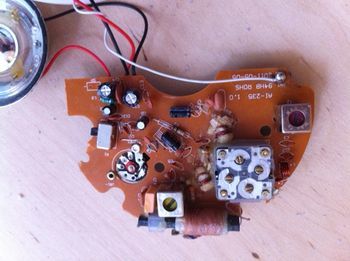
Shortfilm storyboards
2) it‘s raison d‘être -- your personal relationship with it and its implications for your practice
I looked at the radio as an object in a verry personal way. I took the channel seeking, and the noise of an analoge fm radio, as a metaphor for my search for a balance between bern and rotterdam. So I filmed on my journey, when i came back after the vacation.
My personal relation I‘m living and studying in Holland, so listening to swiss radio is something, that brings me closer to my home in Switzerland. From the news I hear about things happening in my country and listening to known songs, brings back the familiar. But it‘s mostly about hearing my language spoken from known voices. Even though in this case it‘s only possible on the internet - no chanel searching required. Considered it conceptually, I see a poetic relation of finding a balance between Holland and Switzerland, in the action of searching for the right chanel. But in this case the action is not only a small gesture, but more an actual movement of the whole body - Which reflects on my journey between Bern and Rotterdam.
Sequences of my journey, interlocking braided. The train and airport responded, mingle with the sounds of the channel seeking radio.
It shows to me, that these features of a departed technologie can trough its imperfection, bring more content to something.
3) its larger cultural context.
Silly walk
As well for my first as for my second idea with the radio, I can imagine versions of continuation in more pedagogic ways for museum, schools or for aforementioned purposes. The interactional part, also made me think of forming this part of the installation. Why not letting a dancer or performanc artist explor it from his point of few. Because of the limited space put at disposal space, I could imagine a funny outcome, like a reference to Monty Python‘s „The Ministry of Silly Walks.
(Camera settings: front person, front radio, side)
- view of the radio - view of the person - person is moving in front of the radio - close ups: of the eyes - sensor, feets - display
Material experiments:
Reflection document
Sensor-demo
With Laura Shurink together we made a sensor-demo in a bra. The bra is equipped with a temperature sensor, as soon the room temperature rises above 24 ° C, 2 ventilatoten start to rotate. For the ventilators we hacked milkfoamers.
Museum Of Fantastic Forgeries
Chest of drawer
Chest of drawer - You can't lay down your memories -Tejo Remy for Droog design 1991
Medium:Metal, paper, plastic, burlap, contact paper, and paint
Dimensions:55 1/2 x 53 x 20" (141 x 134.6 x 50.8 cm)
Tejo Remy
Tejo Remy works as a product, interior and public space designer together with Rene Veenhuizen in Utrecht, the Netherlands. Considering everything as material, Remy incorporates existing information, circumstances, or found goods into new situations, often bringing in more social contact or, telling the story of a particular place. Remy transforms the familiar, yet the feeling remains. Having collaborated with Droog since its inception with the 1991 classics Chest of drawers, Rag Chair and Milk bottle lamps, Remy has reached international acclaim. His commissioners and exhibitors include Museum of Art and Design in New York, Bartow-Pell Mansion Museum in New York, MoMA in New York, Stedelijk Musuem in Amsterdam, Museum Boymans van Beuningen in Rotterdam, ACME Gallery in Los Angeles and the Netherlands Ministry of Housing, Spatial Planning and the Environment.
Tejo Remy Drawer Project Assembly Event [[1]]
Do Chest Of Drawers by Mathieu Maingaurd, referencing the original Chest of Drawers
Drawers
Drawer for Tejo Remy's 100th Chest. Ted Noten was invited to make a special secret drawer for Tejo Remy's 100th 'You Can't Lay Down Your Memory'-chest. This anniversary chest was presented by Droog Design at Art Basel Miami Beach, December 2007.
Books:
Mediated Memories in the Digital Age - José van Dijck
....................................................................................................................................................................................................................................................................................................................................................................................................................................................................................................................................................................................
Materials
Geschäumte Kunststoffe (Schaumstoffe) sind Werkstoffe, die aus einem festen Kunststoff und einem darin dispergierten Gas bestehen.
Geschäumtes Polystyrol wurde 1950 bei der BASF AG als Styropor® erfunden. Styropor® ist in seiner über 50jährigen Geschichte zum Synonym für alle Polystyrol-Schäume geworden. Makroskopischer Aufbau
Schaumstoffe weisen eine zellige Struktur auf. Es gibt offenzellige (schwammartige) und geschlossenzellige Schäume. Geschäumtes Polystyrol (PS-E) ist geschlossenzellig, d.h. die Wände der Zellen besitzen in der Regel keine Öffnungen zu den Nachbarzellen.
Flex foam
www.formx.nl
FlexFoam-iT III /1,25kg FlexFoam-iTIII is een zachte P.U. Schuim met een densiteit van 3 lb/ft³ = 48 kg/m³. Het is een dichte polyfoam die behoorlijk zwaar is en minimaal uitschuimt. Het heeft een gemakkelijke 1 op 1 (volume) mengverhouding.
set 1,25kg 29,95 EUR (Prijs exclusief 21% BTW)
PRICE COMPARISONS:
Flex Foam 20Euros/box
Foam cussion 5Euro/box
Silicon ca. 100Euros/box
Inspirations
Marjan van Aubel
Dutch designer Marjan van Aubel recently unveiled a set of ecologically crafted “Foam China” and a “Foam Cabinet” at Milan Design Week. Each piece is composed of an open-cell porcelain that looks and behaves very similar to polystyrene foam but without the chemical-ridden health hazards and environmental impact.
Read more: China Made of Open-Cell Porcelain Foam is Sustainable and Toxin-Free | Inhabitat - Sustainable Design Innovation, Eco Architecture, Green Building
Because porcelain is made from a combination of natural materials, it is considered eco-friendly and fine for human health. Porcelain is also very strong and is longer lasting than many other types of dishware. Marjan van Aubel‘s finished “foam” china is light-weight, ready for glazing, and encompasses a unique viscous quality.
Van Aubel also designed a Foam Cabinet to store his Foam China that is made out of the same open-cell porcelain. The designer’s choice of material gives the pieces an unfinished quality, which transforms preconceived flaws to into marks of prestige.
Read more: China Made of Open-Cell Porcelain Foam is Sustainable and Toxin-Free | Inhabitat - Sustainable Design Innovation, Eco Architecture, Green Building
Dewi Van De Klomp
These Soft Cabinets from Studio Dewi van de Klomp rethink the typical bookshelf or cabinet by constructing them out of foam rubber. Slots are cut into the dense material creating pockets of space for your dishes or books. The foam cushions itself around the object holding them in place. The more objects you place in each cabinet, the overall shape begins to change and the piece starts to droop, but not fall, slightly under the weight.
Form durch Gebrauch Schaumstoff dient beim Sitzmöbel als Polsterlage zwischen Gestell und Bezug. Bei Matratzen wird er bezogen, bevor er im Bett zum Einsatz kommt. Kurz: Schaumstoff ist kein Material, das aufgrund seiner Ästhetik geschätzt wird, sondern eine funktionale und kaschierte Notwendigkeit. Dewi van de Klomp empfindet das als Unrecht. Sie hat eine Stauraum-Kollektion aus unterschiedlichen Schaumstoffen entworfen. Das große Soft-Cabinet erinnert an einen traditionellen Küchenschrank und ist aus einer starken Materialvariante konstruiert. Es muss sich weniger der Schwerkraft als dem Alter beugen, das durch die Abnutzung sichtbar wird. Das kleinere Modell Small hingegen lässt sich dehnen. Wenn Teller und Tassen eingeschoben werden, wird seine tatsächliche Stärke deutlich. Die beiden Varianten verfügen über schmale Schlitze, in die sich Bücher und anderer Besitz klemmen lassen. Mit steigender Belastung werden sie sich zur einen oder anderen Seite neigen – stehen sie in direkter Nachbarschaft zu anderen Möbeln, werden sie sich an deren stabilen Wangen anlehnen. Jedes Modell wird zu einer individuellen Skulptur, geformt durch den Gebrauch. tp
FOLD
BURN
LAYER
TIE
BIND
CUT OUT
STITCH
2. Etienne Gros
3. Susanna Starr
Presentation
Tejo Remy is collecting found drawers, give them new enclosures by mixing and bundling them together with a strap to one piece again and like that creating a new drawer. The result is a functional object that transcends the boundaries between design and art—it is just as much a dresser as it is a conceptual sculpture.
However his way of treating the obejcts, has something random. The possibilities of manipulating the arangements are limited.By using foam, I had to deal with the aspect of unpredictable reactions of the material it self. Soft foam is not exactly predictable, in what way it‘s going to react. In stead I had to find out, what advantage lay in the flexibility of soft-foam.
Wood is a hard, fibrous structural material, while foam is formed by trapped pockets of air. Remy uses his rearranged empty drawers as an metaphor for the memory system. The foam as a material is build of air chambers, which could be seen as some kind of huge memory system on it‘s own. But remy‘s idea relates also to the difference between the drawers. My version object is mainly about the use of the material. I played with the foam as a material, to create different cabinets. Each one is giving an oportunity to somehow lay something down.
I normaly see the craft and the material more as a way to get there and not so much as the endresult, like this time. In a way my copy and the transformation became one piece of different experiments of treating the foam. The first one is the copy, it looks the closest to one of the origininal drawers. The effort to work as accurate as possible is vissible, although it clearly shows it‘s imperfections. It's obvious a hand made remake, and is not reaching for the level i was looking for. But it‘s a demonstration of how this matierial works or not. Which helped me go further.
You can‘t lay down your memories. They will faid away and change. Which is reflected more in the properties of foam. Less than wood, foam has a lightness and a fragility to it.
Statement File:Statement-FM.1.pdf
..........................................................................................................................................................................................................................................................................................
Continuation
Memories-content of a drawer
Barrão Posted by Honey Filed in All entries, Art culptures made of porcelain and epoxy resin
Hans K Clause
Falling Garden installation by Gerda Steiner and Jörg Lenzlinge
Nick van Woet
His work blends an emphasis on sculptural craft and process with the use of found objects and readymades, resting between aesthetic value and conceptual statement.
Figuratively speaking, the idea is that the world we’ve built for ourselves is only as good as the materials we’ve used to build it — these days, that means all manner of plastics, strange chemicals, and the hollow plaster that replaces stone in the replica statues van Woert repurposes.
He’s preoccupied with materials, and the way modern society has by and large found a way to substitute bad ones for pretty much all the good ones, a condition he mirrors in his own work.
End result
COPY - chest of a drawer
Paper/Illustrator
I copy the drawer in form of a paper craft template
The realistic office interior by Alexis Facca is made completely of paper. I can’t imagine the patience it takes to make such things and imagine the paper cuts!
Work in progress:
TRANSFORMATION - chest of drawers
Memories bring the past into the present, and opens up to the future. But memory can also be literally be in materiality. Materiality is the stuff of memories. Meaningful objects work not only as reminder but as memory itself.
A culture can be mirrored in material forms. We remember with and through things. Memories is a combination between the material and immaterial, the natural and the cultural, both mental and materialistic. We also use things to forget - loosing things, in order to forget.
Objects as things of memory: Souvenirs, gifts, kitsch objects Toys, models, and miniature objects Preservation, conservation and presentation of cultural heritage Presence and absence of the material in digital art and media
We live in a disposable society. The values of our things are constantly changing. To reuse things that lost their former value to their owner, by combining all sorts of former collected pieces, kitsch objects and toys, I preserve and process seemingly useless things. And by casting them in epoxy resin, cutting it into slices in different thickness, the items are loosing most aspects of the original shapes, instead others apear. This process transforms them into a new material. Once collected and sorted, they had a more or less meanigfull role in someones life, they even might once were estimated like small treasures - While now collected by me and giving back a new vallue in a new context.
Today we have a lot of our materialised memories transformed in a dematerialised form of digital data on hard drives or clouds. Photographs, letters and diaries, records and CD‘s are compressed and layed down as digital data in folders and libraries. I find the digital culture very depressing for its lack of materiality. The digital networking creates opportunities, but also a quickness, which let things float past us, without having us benefited.
Collecting these comparatively unimportant things, is a way of rather creating more with less. It‘s o kind of collage technique of unifying and taking things away.
.....................................................................................................................................................................................................................................................................................................................................................................................................................................................................................................................................................................................
Make from the museum
Tuesday 2nd September: As a group we decided we wanted to create a 3D object. After looking at the Boijmans collection we chose a rubber vase and we wanted to scan this with the 123 catch app. This did not work with our object because of the reflection, transparent surfaces and blurry photo's. Most objects were not easy to reach because there were behind glass so we chose a other method and an other object. We chose the picknick set of Jean Pierre Vitrac (1977). We wanted to keep the function and the idea of the set but in a different implementation. We wanted to put together our picknick set with different plates and cutlery we found in shops or at home then make pictures of it and make a good 3D scan with the 123 catch app. After a discussion with the teachers we realized, that we first need to have the data. I order to share it on the wiki page. That for we had to change our idea. We came up with the idea to trace over the photos with illustrator and then transform it into a 3D model in tinker cad.
Wednesday 3rd September: We decided to make different versions for the exhibition on thursday. One 3D print model, with the same color and form but in a smaller version because with the printer the exact dimensions were not possible at the WDKA. Secondly we make our own picknick set molt with multifunction cutlery (3 in 1) and a square plate. We wanted to make a more minimalistic form but keep the original snap off idea of the pick nick set of Vitrac. We chose to use the vacuum forming technique. That we are doing tomorrow (Thursday) at the Stadsfablab in Utrecht. We want to make a couple of this object in different colors. That could work in mass production.


